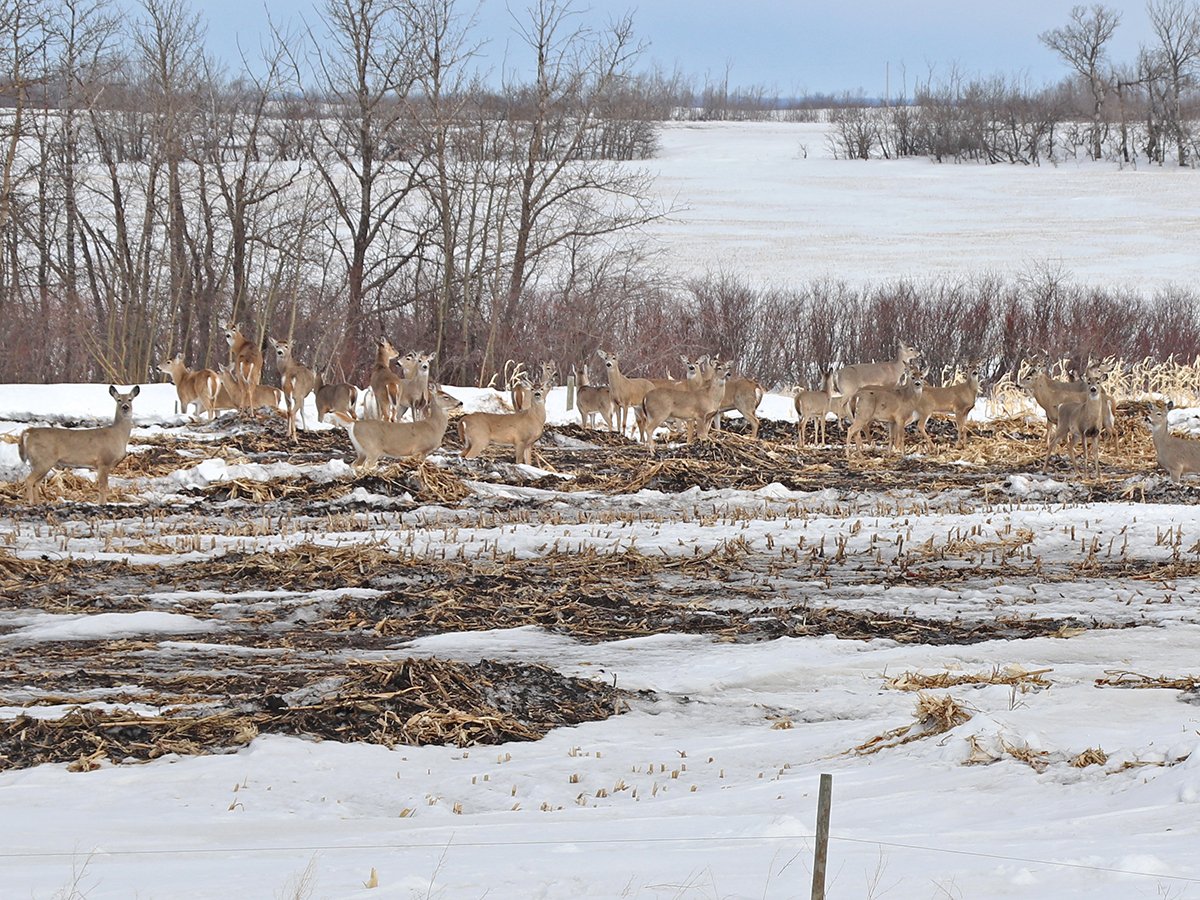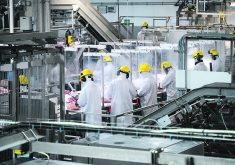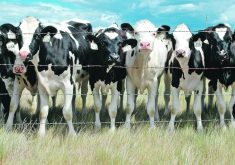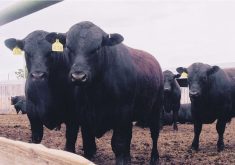Glacier FarmMedia – A new concept in dairy equipment management brings the automation and data of robotic milking to a milking parlour orientation.
DeLaval has several installations around the world where cows are herded into a holding area from which they access a group of automated milkers.
“It really comes down to you and how would you really want to manage your facility; what is your style of managing your cows and managing your people,” says Jason French, VMS solution manager with DeLaval, during a webinar launching the concept.
Read Also

Foot-and-mouth disease planning must account for wildlife
Our country’s classification as FMD-free by the World Organization for Animal Health has significant and important implications for accessing foreign markets.
No batch milking systems are running in Canada yet, says French. The debate over milking systems has come down to robots versus a rotary milking parlour.
DeLaval provides automated milking systems and several types of rotary milking systems, but not an automated rotary. Competitor GEA has automated rotaries and some are installed in Canada.
DeLaval batch milking will provide an automated option in a parlour configuration.
“I see the advantages of robotics, but I don’t want to go to a 24-hour voluntary robot milking system,” says French, in explaining the type of customer to whom batch milking is targeted.
“So there’s a gap, and we really see where VMS batch milking is going to fill that gap.”
The advantages of automated milking include less labour needed to milk cows at a certain schedule because the cows choose when to be milked. Automated systems also collect some data that rotaries do not, such as progesterone testing on the DeLaval VMS 310s, which determines pregnancy and heats and isn’t available on parlours.
As well, fresh cows can be milked as many times as they want, with no additional labour.
“Let’s look at (the) robots side, and the main thing why people get into robotics, it’s labour,” says French. “They come into robotics because they’ve been struggling getting people or even the quality of people to come work on their farm.”
On the downside of automated systems, they are always on, which can create alerts at all hours of the day and night. Employees must also have multiple skills.
In parlours, milking occurs at predictable times, which makes for easier planning with employees, defined shifts and more defined jobs for workers. Feeding a total mixed ration without need to supplement in the robot is another advantage of a parlour-type arrangement.
Batch milking can reduce the number of people needed.
In a rotary parlour system, one worker is required to move cows into the holding area, one for milking preparation, another for attaching milkers and one more for dipping as the cows move to different stations.
In the automated batch milking system, one worker moves cows into the holding area, and another, the herd manager, monitors health, milk production and breeding reports and deals with the cows that need attention.
A robot manager does daily maintenance and manages cow flow in the pen, says Stephanie Dillon, a DeLaval advisory specialist.
That means one fewer people needed for the operation compared to a rotary parlour.
Dillon also says the automated system can be operated with fewer people, in a pinch, but the rotary system cannot. And in a small facility, the herd manager and robot manager could be the same person, as long as they can easily move between sort and milking areas.
A VMS batch milking system looks much like a milking parlour system, with cows moved into a holding pen, then into a milking area and leaving through an exit lane.
A batch milking system requires less slope in a holding area and a sort gate in the exit lane that can bring cows back if they didn’t have a complete milking.
A voluntary milking system milks about eight cows per hour, so a batch milking system with 15 robots can milk up to 128 cows per hour.
The system can work up to 21 hours per day. Three hours per day are needed to wash and do daily robot service.
Aurora Organic dairy’s Rancho Pepper in Texas was an early adopter of the system. The 1,900-cow dairy doesn’t have freestalls and the cows are in open dry lots, so bringing them into a milking facility makes sense.
Dawn Dial, dairy manager at Rancho Pepper, says they wanted a system that worked similarly to other freestall barns, but used less labour. They have 22 VMS units in the milking facility.
“These cows are very relaxed, and I feel that they are more relaxed than any parallel [parlour] I have ever seen in my life. I would definitely do this again.”
















